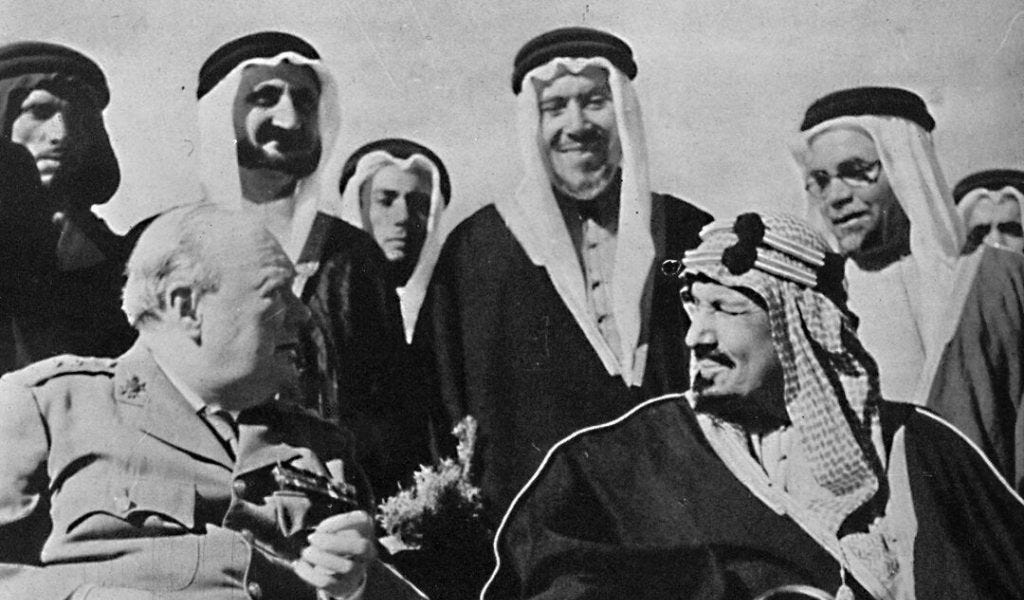The Gaggle Book Club: "The Stern Gang: Ideology, Politics And Terror, 1940–1949" By Joseph L. Heller
Each week, The Gaggle Book Club recommends a book for Gagglers to read and—most important—uploads a pdf version of it.
Our practice is that we do not vouch for the reliability or accuracy of any book we recommend. Still less, do we necessarily agree with a recommended book's central arguments. However, any book we recommend will be of undoubted interest and intellectual importance.
Today's book club selection is Joseph L. Heller’s "The Stern Gang: Ideology, Politics and Terror, 1940–1949." Published in 1995, the book is considered to be the definitive intellectual history of the Stern Gang in English, and is an important contribution to the deconstruction of the Zionist myth and of extreme nationalist ideology underlying it.
Lehi (originally called “Irgun Zvai Leumi in Israel”) was a radical breakaway from the Irgun, which was itself an integral part of Revisionist Zionism led by Ze’ev Jabotinsky. Heller traces how Avraham “Yair” Stern, influenced by mystical nationalism and the Maccabean myth, rejected Jabotinsky’s pragmatism and saw in the British Empire an implacable enemy of the Jews. Heller contrasts Lehi’s uncompromising anti-British stance with the attitude of mainstream Zionists such as David Ben-Gurion, who favored working with the British.
The Stern gang is of course famous for responsible for a number of shocking, violent acts perpetrated during the years of the British Mandate in Palestine.
In 1944, it assassinated Lord Moyne, British Minister Resident in the Middle East, stationed in Cairo. Moyne was seen to be a symbol of British resistance to allowing Jews into Palestine. British policy toward Jewish immigration into Palestine had changed dramatically following publication of the 1939 White Paper.
In 1948, the Stern Gang assassinated Count Folke Bernadotte, who at the time was seeking to mediate on behalf of the United Nations between the Arab and Israeli warring parties. On Sept. 17, members of the Stern Gang, posing as Israeli soldiers, stopped his U.N. convoy in Jerusalem and shot him at close range. What had Bernadotte done? He had proposed a peace plan that would return parts of the Negev to Arab control, internationalize Jerusalem and allow Palestinian refugees to return. Future Israeli Prime Minister Yitzhak Shamir, a Stern Gang leader, is believed to have been involved in the assassination plot, though he never faced any criminal charges for it.
Then there was the Deir Yassin Massacre. On April 9, 1948, a joint force of about 120 fighters from Irgun and Lehi (Stern Gang) attacked the Arab village of Deir Yassin, near Jerusalem. They murdered around 100 to 120 villagers, including women and children. The Jews were seeking to secure control of roads and territory before the end of the British Mandate. Deir Yassin was considered strategically significant, lying as it did on the road to besieged Jerusalem. The attack led to mass panic among Palestinian Arabs, contributing to the 1948 refugee exodus. Stern and Irgun deceptively claimed that the operation was military in nature, but later accounts—including from participants—admitted that excessive violence was perpetrated against noncombatants precisely in order to trigger Palestinian flight.
According to Heller, terrorism was central to Lehi’s ideological identity: Lehi saw terror as a legitimate, even heroic, method of liberation. Members were encouraged to see themselves as biblical Maccabees; violence was proclaimed to be a sacred struggle. Heller argues that Avraham Stern’s mystical romanticism, informed by Jewish history and the myth of Maccabean revolt, justified extreme violence. After Stern’s death at the hands of the British in 1942, Shamir became one of Lehi’s leaders. Heller emphasizes Shamir’s role in preserving ideology and directing operations.
Shamir explicitly argued that terror was morally permissible in wartime. In a 1943 article, he wrote: “Neither Jewish morality nor Jewish tradition can be used to disallow terror as a means of war… terror is for us a part of the political war appropriate for the circumstances of today.”
Heller helps us understand the differences between Irgun and the Stern Gang. Though both were Zionist paramilitary groups that operated in British Mandate Palestine during the 1930s and 1940s, they differed in origins, ideology and strategic outlook. While both engaged in violence—especially against British targets—the Stern Gang was more radical, more ideologically extreme and generally more unapologetically terroristic.
Though Jewish nationalist, Irgun nonetheless accepted the leadership of the Jewish Agency. The Stern Gang was extremely ideological, seeking total Jewish sovereignty in all of Eretz Israel, and saw the British as occupiers no different from other colonial powers—even during the fight against Nazi Germany. Avraham Stern broke away from Irgun in 1940 when Irgun agreed to suspend operations against the British during World War II. Stern viewed this as betrayal. He believed that Great Britain, more than Nazi Germany, was the primary obstacle to Jewish statehood.
Lehi went so far as to propose to Nazi Germany an alliance against the British. In late 1940 or early 1941, Lehi sent a proposal to the German authorities in Lebanon: "Proposal of the National Military Organization in Palestine (Irgun Zevai Leumi) in Palestine, concerning the solution of the Jewish question in Europe and the participation of the NMO in the war on the side of Germany." This came to be known as the Stern–Grünbaum Proposal. After the fall of France in 1940, Syria and Lebanon came under the control of Vichy France. This meant that Nazi German officials could operate undisturbed there. Beirut became a forward operating base for Nazi propaganda and espionage in the eastern Mediterranean and Middle East.
Lehi's proposal had a number of key ingredients: The Jews of Europe would be transferred to Palestine. Because the British were the main obstacle to the achievement of this objective, the Jewish movement in Palestine (Lehi) would collaborate with Nazi Germany against the British. Lehi would conduct sabotage and military operations in British-controlled Palestine. Lehi would align itself with the Axis powers in exchange for German support of Jewish immigration into Palestine and eventual statehood. The proposal explicitly referred to Nazi Germany as “the natural ally” of Lehi in their mutual struggle against Great Britain.
The Germans never took Lehi up on the offer. By late 1940 or early 1941, the Nazi regime had lost interest in the Zionists. The Madagascar Plan was long in the past. Apart from anything else, the transfer of Jews to Palestine under Nazi auspices was logistically utterly unrealistic. The British controlled Mandatory Palestine, both militarily and administratively. Any significant movement of Jewish populations into Palestine would have had to breach British naval and land control, something Germany had no means of doing. In 1941, the Royal Navy dominated the eastern Mediterranean. The Axis powers did not have access to the Levant or Palestine — indeed, Vichy Syria and Lebanon were soon invaded by British and Free French forces (June–July 1941). There was no overland or sea corridor available through which Nazi Germany could feasibly "transfer" Jews to Palestine, even if they had wanted to.
Joseph Heller’s "The Stern Gang: Ideology, Politics And Terror, 1940–1949" remains one of the most insightful scholarly accounts of the Stern Gang, the deadly influence of which continues to haunt the Middle East.

















